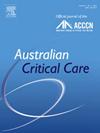提高重症监护护理满意度:护患视角
IF 2.7
3区 医学
Q2 CRITICAL CARE MEDICINE
引用次数: 0
摘要
对测量患者满意度作为护理质量指标的兴趣导致了各种测量仪器的发展。然而,到目前为止,还没有研究提出从护士和患者的角度提高重症监护护理满意度的多维策略。目的本研究的目的是描述护士和危重病人确定的提高护理满意度的策略。方法定性描述性研究。这项多中心研究在西班牙的重症监护病房进行。人群由出院患者和重症监护护士组成,样本采用方便抽样方法招募。四个在线焦点小组与病人和护士进行讨论,直到数据达到理论饱和。焦点小组由主持人领导,在获得知情同意后录制视频,然后转录。接下来,对内容进行分析,并对信息进行三角测量。古巴和林肯的可信和真实标准得到了遵循。结果确定的策略有:(1)整体护理策略;与传播形式有关的战略;与专业行为有关的战略;(四)与单位基础设施相关的策略。最常提到的策略是持续监测疼痛、记录疼痛、促进患者自主、培养患者隐私、表达同情、倾听、使用药物休息、满足娱乐需求、使用简单的语言、进行眼神交流、接受沟通培训、进行跨学科沟通和使用临床判断。报告符合定性研究报告的综合准则。结论护理人员和患者采用相似的策略来提高重症监护病房住院期间的护理满意度。实施和评估已确定的战略将支持在医疗保健专业人员的承诺推动下不断改进人性化护理。本文章由计算机程序翻译,如有差异,请以英文原文为准。
Improving satisfaction with intensive care nursing: Perspectives of nurses and patients
Background
Interest in measuring patient satisfaction as an indicator of the quality of nursing care has led to the development of various measurement instruments. However, to date there are no studies that propose multidimensional strategies to improve satisfaction with intensive care nursing from the perspective of both nurses and patients.
Objectives
The objective of this study was to describe strategies to improve satisfaction with nursing care identified by nurses and critically ill patients.
Methods
This was a qualitative descriptive study. This multicentre study was conducted in intensive care units in Spain. The population consisted of discharged patients and critical care nurses, and the sample was recruited using convenience sampling. Four online focus groups were held with patients and nurses until theoretical saturation of the data was reached. The focus groups were led by a moderator, recorded on video after obtaining informed consent, and then transcribed. Next, content was analysed, and the information was triangulated. Guba and Lincoln's criteria of trustworthiness and authenticity were followed.
Results
The strategies identified were (i) strategies for holistic care; (ii) strategies related to forms of communication; (iii) strategies related to professional behaviours; and (iv) strategies related to the infrastructure of the unit. The most frequently mentioned strategies were continuously monitoring pain, documenting pain, promoting patient autonomy, fostering patient privacy, showing empathy, listening attentively, using medication for rest, meeting recreational needs, using simple language, making eye contact, receiving communication training, practicing interdisciplinary communication, and using clinical judgement. Reporting complied with Consolidated Criteria for Reporting Qualitative Research.
Conclusion
Nurses and patients identified similar strategies to improve satisfaction with the nursing care received during intensive care unit admission. Implementing and evaluating the identified strategies will support the ongoing improvement of humanised care, driven by the commitment of healthcare professionals.
求助全文
通过发布文献求助,成功后即可免费获取论文全文。
去求助
来源期刊

Australian Critical Care
NURSING-NURSING
CiteScore
4.90
自引率
9.10%
发文量
148
审稿时长
>12 weeks
期刊介绍:
Australian Critical Care is the official journal of the Australian College of Critical Care Nurses (ACCCN). It is a bi-monthly peer-reviewed journal, providing clinically relevant research, reviews and articles of interest to the critical care community. Australian Critical Care publishes peer-reviewed scholarly papers that report research findings, research-based reviews, discussion papers and commentaries which are of interest to an international readership of critical care practitioners, educators, administrators and researchers. Interprofessional articles are welcomed.
 求助内容:
求助内容: 应助结果提醒方式:
应助结果提醒方式:


